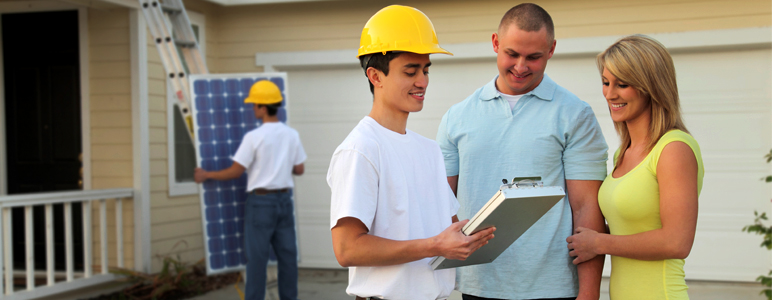


Generating your own electricity with solar photovoltaic (PV) panels works anywhere in the U.S. year-round. There’s plenty of sunshine for PV, even in winter, although at a slightly lower production level. Germany leads the world in solar power output and it doesn’t have a sunny climate. Its solar radiation is about the same as Alaska’s. So, cloudy days will come and go, but on average, it’s not going to affect the return on investment of solar panels significantly.
#1 Solar’s never been cheaper
Over the past ten years, PV panel prices have dropped more than 50 percent. Concurrently, solar leases and power purchase agreements have made getting solar easier—with little or no upfront costs. As for money, there are many new options for long-term, low-interest loans for clean energy and many states, utilities and others offer a variety of tax credits, rebates and incentives.
#2 Solar saves on utility bills
Solar gives immediate utility bill savings, but long-term savings are becoming less predictable. In Hawaii, California and other states, utilities are changing to time-of-use rate programs for homes with solar that charge more for electricity consumed during peak use periods (evenings) and less during off-peak periods (midday). Still, having solar will mean paying less than not having it, but maximizing savings may require adding energy storage to shift your electricity load.
#3 The federal investment tax credit for solar is still on
Congress renewed the 30 percent credit with no reduction until the end of 2019. On a $20,000 system that’s a $6,000 savings. Increasingly, states and local utilities are offering additional tax incentives and direct rebates.
#4 Net energy metering is now available in most states
Net energy metering means utilities compensate you for excess solar generation. You get credit to use utility-supplied power when your system isn’t producing enough solar power, like at night or on very overcast days, or your utility may offer cash for your contributions to the grid. Again, future utility rate structures, such as time-of-use billing, may reduce the value of credits.
#5 A good return on investment
You’re likely to produce 75-90 percent of the electricity you need and save $100-$200 per month, which means your system could pay for itself in 7-10 years. Because PV systems operate effectively for 20-30 years or longer, it adds up to secure long-term savings and increased home value.
#6 Solar increases your home’s value
Depending on where you live, solar PV panels can add up to $15,000 to the value of your home, according to a study by the U.S. Department of Energy’s Lawrence Berkley Laboratory.
#7 It’s good for the environment
A typical residential system will eliminate around 4 tons of atmospheric carbon emissions each year. That’s equal to about the annual amount of greenhouse gas emissions from one gas-powered car.
Bottom line on solar
Although the long-term value proposition for solar PV can shift with future changes in utility billing structures and rates, there really aren’t any substantial reasons not to go solar now.
Learn about installation costs, available incentives and more at CSE’s Solar Energy Center.

